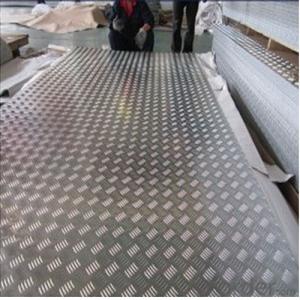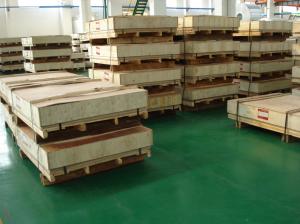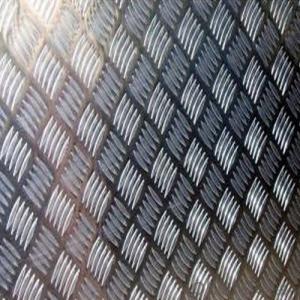Diamond Plate Aluminum Sheets 4X8
Diamond Plate Aluminum Sheets 4X8 Related Searches
Led Light Bulbs For Ceiling Fixtures Led Lamps For Ceiling 42 In Ceiling Fan With Light Aluminum Coil Stock For Gutters Aluminum Foil For The Grill Hole Saw For Aluminum Plate Aluminum Tread Plate For Trailer Bow Plate For Aluminum Boat Aluminum Foil For Grow Room Aluminum Foil For Joint PainHot Searches
Stock Price For Aluminum Aluminum Coil Stock For Sale Aluminum Gutter Coil For Sale Used Aluminum Scaffolding For Sale 1/4 Aluminum Plate For Sale Aluminum Bar Stock For Sale Aluminum Round Stock For Sale Aluminum Diamond Plate For Sale Aluminum Scaffolding For Sale Craigslist 6061 Aluminum Plate For Sale Aluminum Dock Plate For Sale 7075 Aluminum Plate For Sale Aluminum Tread Plate For Sale Aluminum Checker Plate For Sale Aluminum Plate For Sale Near Me Plate Aluminum For Sale Aluminum Plate For Sale Aluminum Square Stock For Sale Aluminum Flat Stock For Sale Billet Aluminum Stock For SaleDiamond Plate Aluminum Sheets 4X8 Supplier & Manufacturer from China
Okorder.com is a professional Diamond Plate Aluminum Sheets 4X8 supplier & manufacturer, offers integrated one-stop services including real-time quoting and online cargo tracking. We are funded by CNBM Group, a Fortune 500 enterprise and the largest Diamond Plate Aluminum Sheets 4X8 firm in China.Hot Products
FAQ
- There are several heat treatment options available for aluminum sheets, each offering different properties and characteristics to the material. 1. Annealing: This process involves heating the aluminum sheet to a specific temperature and then slowly cooling it down. Annealing helps to relieve internal stresses in the material and improve its ductility and machinability. 2. Solution Heat Treatment: This treatment involves heating the aluminum sheet to a high temperature and then rapidly quenching it in water or other cooling media. Solution heat treatment is commonly used to dissolve and homogenize any alloying elements present in the aluminum, resulting in improved strength and hardness. 3. Precipitation Hardening: Also known as age hardening, this treatment is typically performed after solution heat treatment. It involves heating the aluminum sheet at a lower temperature for a specific period, allowing the alloying elements to precipitate and form fine particles. This process increases the strength and hardness of the aluminum without sacrificing its ductility. 4. Stress Relieving: This treatment is performed to relieve residual stresses that may have developed during fabrication or machining processes. The aluminum sheet is heated to a specific temperature and then slowly cooled down, reducing the risk of distortion or cracking. 5. Hardening: By heating the aluminum sheet to a specific temperature and then rapidly quenching it, hardening can be achieved. This process increases the strength and hardness of the material, making it more suitable for applications that require high strength-to-weight ratios. It is important to note that the specific heat treatment option chosen for aluminum sheets depends on the desired properties and application requirements. Consulting with a metallurgical expert or referring to the material's specifications can help determine the most suitable heat treatment option.
- Yes, aluminum sheets are suitable for manufacturing solar reflectors. Aluminum is a highly reflective material that can efficiently reflect sunlight, making it an ideal choice for solar reflectors. It has a high reflectivity and low emissivity, allowing it to reflect a significant amount of solar radiation while minimizing heat absorption. Additionally, aluminum is lightweight, durable, and corrosion-resistant, making it suitable for outdoor applications. Its flexibility also allows for easy shaping and forming into various reflector designs. Overall, aluminum sheets provide excellent performance and reliability for manufacturing solar reflectors in solar energy systems.
- The thickness of an aluminum sheet has a significant impact on its formability. Generally, thinner sheets of aluminum are more malleable and easier to shape compared to thicker sheets. This is because thinner sheets have lower resistance to deformation and require less force to bend or stretch. Thicker aluminum sheets, on the other hand, have higher resistance to deformation and are less malleable. They require more force and energy to shape, and may be more prone to cracking or tearing during forming processes. Thicker sheets also have a higher likelihood of experiencing springback, where the material partially returns to its original shape after being formed. The formability of aluminum sheets is also influenced by the alloy composition and the specific forming process being used. In some cases, certain alloy compositions or heat treatments can enhance the formability of thicker sheets, making them easier to shape. In summary, the thickness of an aluminum sheet directly affects its formability. Thinner sheets are generally more malleable and easier to shape, while thicker sheets require more force and are less malleable. The alloy composition and specific forming processes being used can also impact the formability of aluminum sheets.
- The electrical conductivity of 101 aluminum sheets would depend on various factors such as the thickness of each sheet, the purity of the aluminum, and any possible impurities or alloying elements present. Generally, aluminum is known for its relatively high electrical conductivity compared to other metals. However, without specific information about the aforementioned factors, it is difficult to provide an exact value for the electrical conductivity of 101 aluminum sheets.
- Aluminum sheets have the ability to undergo anodization for the purpose of aesthetics. Anodization is an electrochemical procedure that forms a protective oxide layer on the surface of the aluminum. This layer has the potential to be colored in a variety of shades, thus offering a wide range of aesthetic possibilities. Anodized aluminum sheets are highly sought after in the field of architecture, particularly for constructing facades, due to their enduring and visually pleasing appearance. Furthermore, the anodized layer bolsters the aluminum's resistance to corrosion and wear, making it suitable for both indoor and outdoor applications. Moreover, anodized aluminum sheets can be subjected to additional processes like etching or laser engraving, enabling the creation of intricate designs and patterns.
- Over 5 billion aluminum cans are recycled each year. If laid end to end, these cans would form a line reaching from?
- No, Ed. 1 billion seconds = 31.69 years, so it was the spring of 1976. Also 1 billion minutes ago = about 1901.3 years ago, so Christ would have been about 100. But I digress... Anyway, let's say the average aluminum can is 4.9 tall (I measured a Coke can). 5 billion cans would be 24.5 billion inches tall. This would be 386,679 miles. This would be from the Earth to the moon (about 250,000 miles) and halfway back again!
- Depending on the desired outcome and application, there are multiple techniques available to finish aluminum sheet edges. One option is deburring, which involves removing sharp or rough edges from the aluminum sheet. This can be accomplished with tools like files, sandpaper, or specialized deburring machines. Deburring not only enhances the appearance of the edges but also helps prevent potential injuries or accidents caused by sharp edges. Another method is chamfering, where a beveled edge is created on the aluminum sheet. This can be done using chamfering tools or by carefully filing or sanding the edges at a specific angle. Chamfering is often performed to improve the aesthetics of the aluminum sheet and make it easier to handle and assemble. Additionally, edge rounding is a technique that involves smoothing the edges of the aluminum sheet to give them a rounded or curved profile. Sanders, grinders, or specialized edge rounding machines can be used for this purpose. Edge rounding not only enhances the visual appeal of the aluminum sheet but also reduces the risk of injury from sharp edges. Moreover, anodizing is a widely used finishing method for aluminum sheet edges. It involves creating a protective oxide layer on the aluminum surface through an electrochemical process. Anodizing not only improves the corrosion resistance of the aluminum but also offers a range of color options for the edges, allowing for customization and improved aesthetics. Lastly, powder coating is another viable method for finishing aluminum sheet edges. It entails applying a dry powder onto the aluminum surface and then heating it to create a durable and decorative finish. Powder coating provides a wide variety of colors, textures, and finishes, allowing for customization and enhanced visual appeal. In conclusion, the choice of finishing method for aluminum sheet edges depends on factors such as the desired appearance, functionality, and application requirements. It is crucial to consider these factors and seek expert advice to determine the most suitable method for a specific project.
- what are the differences between aluminium , iron , steel.... properties like strength , durability , corrosion resistance properties...finally which is cost efficient and best for all purpose..??
- take Mechanics of Materials course next semester.. cuz there's so much to tell which can't be covered in a single answer!














































